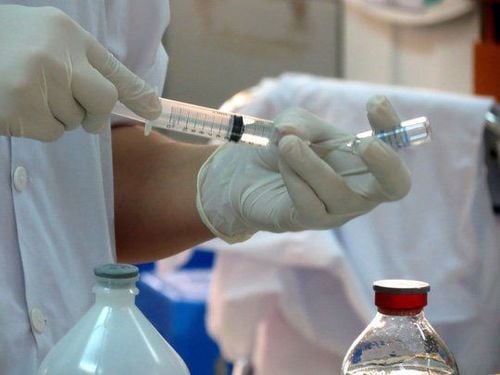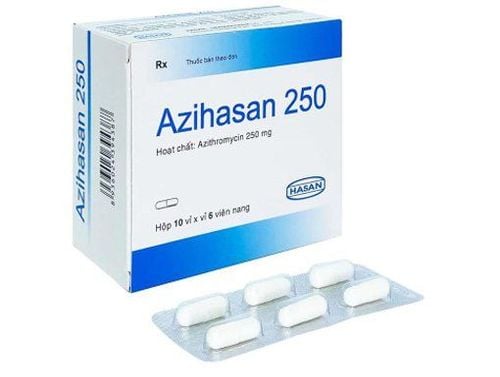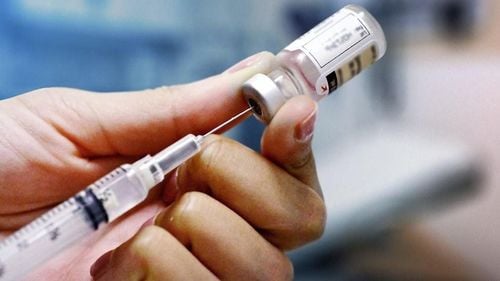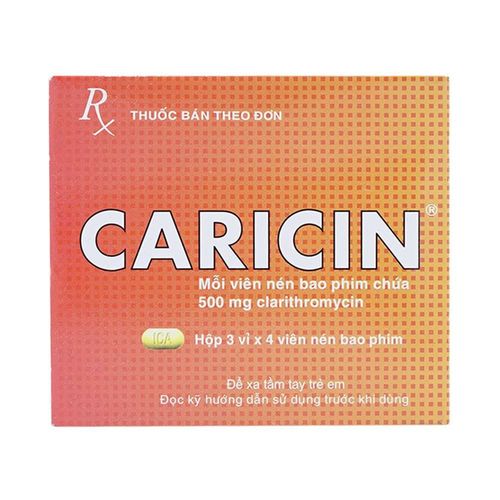This is an automatically translated article.
Article by Pharmacist Duong Thanh Hai - Clinical Pharmacist - Faculty of Pharmacy - Vinmec Times City International Hospital
Despite being an old and highly toxic antibiotic, the antibiotic Colistin is one of the few weapons capable of combating multi-resistant and super-resistant bacteria. Therefore, the drug is still prescribed by doctors in some cases. Therefore, to ensure safety, doctors need to adjust the appropriate dose for each patient as well as closely monitor kidney function during treatment.
1. What is Colistin? Colistin is an antibiotic of which group?
The antibiotic Colistin is an old antibiotic that was discovered in 1949 and gradually fell out of use in humans due to its high nephrotoxicity and the advent of safer alternatives. However, before the strong increase of infectious diseases caused by super-resistant Gram-negative bacteria strains such as Pseudomonas aeruginosa (blue pus bacilli), Acinetobacter baumannii, Klebsiella pneumoniae, E.coli causing blood infection and inflammation lungs in mechanically ventilated patients in the intensive care unit, this drug may be indicated in some cases.
Colistin is an antibiotic of which group? The drug has a bipolar lipopeptide macromolecular structure, belonging to the group of polymyxins, which is not absorbed from the gastrointestinal tract. To reduce the risk of parenteral toxicity, colistin is produced as an inactive sodium colistin methanesulfonate prodrug also known as colistimethate sodium (CMS). After entering the body, the precursor will be hydrolyzed to form active colistin.
2. How does the antibiotic Colistin work?
In Gram-negative bacteria, the extracellular membrane acts as a barrier against permeation, composed of an inner phospholipid layer and an outer layer consisting of lipopolysaccharide (LPS), proteins, and phospholipids. Lipid A is the most important component of LPS that plays a role in keeping fatty acyl chains inside thanks to its lipophilic properties, helping to stabilize the entire outer membrane structure of bacterial cells. The exact mechanism of action of colistin is still unclear, but the most widely agreed upon mechanism is by its membrane lysis effect. The drug binds to lipid A, disrupts the linkage between LPS so that the drug can easily penetrate the outer membrane, then continues to break the phospholipid bilayer in the inner membrane, causing cell membrane lysis and cell death. bacteria.
3. How is the antibiotic Colistin used?
Because of its high nephrotoxicity, colistin should only be used in patients with infections caused by multidrug-resistant Gram-negative bacteria. The drug is usually produced as a CMS prodrug in a vial of powder for injection. There are two main conventional units used worldwide for the dosage of CMS: the international unit (UI) and the mg unit of active colistin. However, on the labels of injectable products, manufacturers may present it in terms of international units or mg of colistimethat, which can lead to confusion. In fact, 1 million units (MUI) corresponds to 80mg of CMS and translates to approximately 33.3mg of the active form of colistin. Dosage of the drug will be calculated for each patient according to the patient's weight and kidney function according to the active colistin content. In normal people, the usual dose level does not exceed 5 mg/kg, the drug is administered intravenously.
4. What are the side effects to watch out for with colistin antibiotics?
Nephrotoxicity and neurotoxicity are common undesirable effects of colistin. Other less common adverse effects of colistin include allergic reactions (rash, urticaria, generalized pruritus), pain at the injection site, ototoxicity, and drug fever. The neurotoxicity of colistin is dose-dependent and reversible, usually occurring within 5 days of initiating therapy. Manifestations of neurotoxicity include: muscle weakness, facial and peripheral paralysis, ocular muscle paralysis, dysphagia, ataxia, partial deafness, drooping eyelids, blurred vision, dizziness, confusion, hallucinations, convulsions and rarely neuromuscular blockade causing respiratory muscle paralysis. Nephrotoxicity is the most worrisome adverse effect of colistin treatment. Nephrotoxicity is manifested by decreased creatinine clearance, possibly with proteinuria, castration and oliguria. Usually, the nephrotoxicity is reversible upon discontinuation of the drug, but some patients require dialysis support. Nephrotoxicity is also dose dependent.
Despite its high toxicity, but colistin is one of the few weapons capable of combating multi-resistant and super-resistant bacteria, so the drug still plays a very important role in today's treatment. To ensure the effectiveness and safety of using the drug, it is necessary to adjust the dose accordingly for each patient as well as closely monitor renal function during treatment.
Follow Vinmec International General Hospital website to get more health, nutrition and beauty information to protect the health of yourself and your loved ones in your family.
Please dial HOTLINE for more information or register for an appointment HERE. Download MyVinmec app to make appointments faster and to manage your bookings easily.














